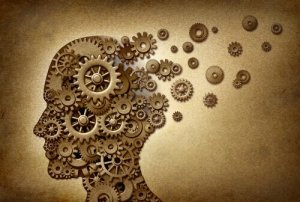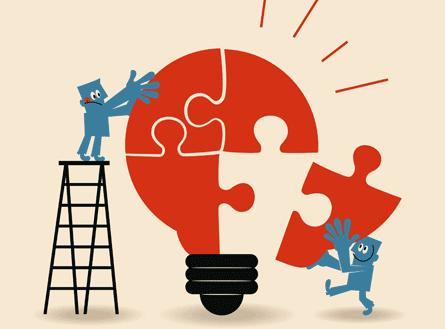Meaningful Learning: Definition and Characteristics

Not all learning is the same. This becomes obvious when we compare deep learning, which is learning about a subject we’re interested in, with memorizing something boring in a literal way. Because of this, David Ausubel studied the differences between these two learning types and developed his theory of meaningful learning from them.
Different ways of learning
Many educational psychologists have focused their efforts on trying to develop models that describe the way we acquire knowledge. Ausubel’s model of meaningful learning is one of the models that has most successfully explained how meaningful learning happens. This type of learning consists of linking new information to previous knowledge. In meaningful learning, the subject has an active role since they have to restructure and organize information.
This theory has strong constructivist influences. For David Ausubel, true knowledge is constructed by the subject through their own interpretations. Because of this, all knowledge based on literal memory is nothing more than repetition. It carries hardly any or no significance. In this type of knowledge, the subject doesn’t interpret anything. Therefore, it’s difficult for this knowledge to have a significant influence on the subject’s life.
“The most important single factor influencing learning is what the learner already knows.”
-David Ausubel-
What is meaningful learning?
Meaningful learning is to feel that all the pieces of a concept, idea, theory, formula, or argument fit together. Most of us have felt that sensation before. We’ve probably felt that what we are learning ties in our mind and makes sense.
Stuart T. Haines, a professor at the University of Maryland School of Pharmacy, conducted a study with his own students to find out how they integrated information and what methods they used.
Pharmacy students have to memorize many molecular entities and pharmaceutical names. He demonstrated something very important in his study. When the facts were meaningful and made sense to the students, they were able to retain the information a lot better. Not only this, but they could also “transfer” the facts to long-term memory a lot more easily.

- Meaningful learning is active, constructive, and durable.
- It implies understanding. We must feel that the information is useful and not limit ourselves to only memorizing it.
- It requires active learning techniques.
- It also implies linking new information to existing knowledge.
A change in the educational model
To understand the nature of meaningful learning, we must understand that Ausubel’s theory is a theory destined for direct application. Ausubel didn’t want to simply describe the different types of learning. He was interested in generating educational changes.
As we mentioned earlier, it’s difficult for literal or superficial learning to change students. We don’t even know if they constitute real learning. This is precisely why we need to better understand some key ideas on this topic.
- Meaningful learning is relational learning. It’s related to previous knowledge and experiences. It changes our previous perspectives and helps us achieve deep learning. Meaningful learning isn’t simply memorizing facts. Instead, meaningful learning is building a conceptual framework regarding how we see and interpret our reality.
- Thus, we must help students activate what they already know to introduce them to new information. This way we help them integrate innovative facts to their existing knowledge frameworks (instead of asking them to create new ones).
- Teachers also have to show students things they don’t know. This way, we create a small cognitive imbalance to awaken their intrinsic motivation or their desire to learn.
Educational implications
This theory has strong implications regarding teaching methods. If we look at current educational models, we can see that they have plenty of problems. The current educational system favors literal learning, making students learn facts, formulas, and names that aren’t meaningful at all.
What’s more, thanks to the current grading system based on objective tests, the current educational system favors superficial learning. This is because meaningful learning isn’t necessary to pass tests. If you want to get good grades, memorization will get you better results with less effort.

That being said, a change is necessary. In this regard, high school and college students have reaped great results from applying meaningful learning. For example, the Hong Kong Polytechnic University launched a program in its classrooms to foster this type of learning. It yielded very positive results. They discovered that meaningful learning boosts self-efficacy in students.
Ausubel’s keys
David Ausubel proposed the following keys to achieve meaningful learning:
- Keep previous knowledge in mind. Meaningful learning is relational and depends on the connection between new information and previous knowledge.
- Provide activities that help awaken the students’ interest. The greater the students’ interest, the more willing they’ll be to incorporate new learning into their conceptual frameworks.
- Create a harmonious environment where the students feel they can trust their teacher. It’s key for students to see their teachers as safe figures they can rely on.
- Provide activities that allow students to give their opinions, exchange ideas, and debate. The students are responsible for their own learning. They’re the ones who should interpret their reality through their conceptual frameworks.
- Explain through examples. Examples help people understand the complexity of reality and achieve contextualized learning.
- Guide the cognitive process of learning. Students can make mistakes since meaningful learning is all about freedom to build their own knowledge. The teacher must supervise the process and guide the students.
- Create situated learning in the sociocultural context. All learning has a social and cultural context. It’s important for students to understand that knowledge has a constructive and interpretative nature. Understanding the ‘why’ of different interpretations will help build meaningful learning.
An educational model focused on meaningful learning requires resources. This is because meaningful learning is much more expensive than literal or superficial learning, which is a lot more common in schools. However, the real question here is which type of learning do we really want. Which one will end up costing more in the end?
This text is provided for informational purposes only and does not replace consultation with a professional. If in doubt, consult your specialist.








